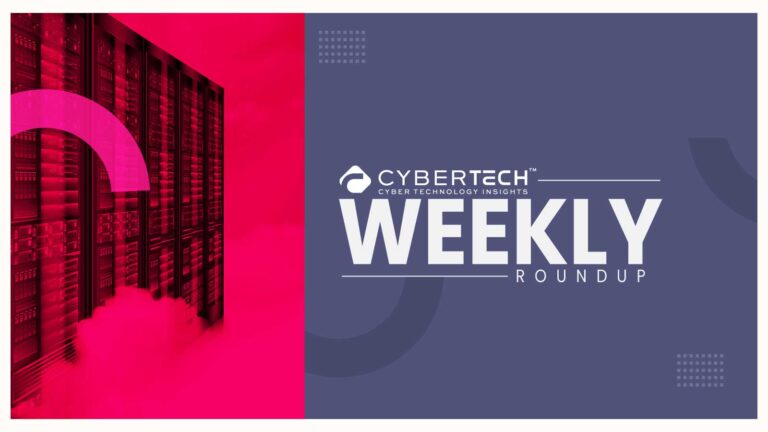Let’s imagine something familiar. It’s Monday morning, you’re enjoying the first cup of coffee, and your team is ready to kick the week off. But then your website starts crawling. Not crashing, just. slow. You check traffic, and it’s looking fine. No warning signs. Until it’s too late. Welcome to the new face of DDoS attack, where the attacker’s best friend is artificial intelligence. Global DDoS attacks surged by 81% in Q1 2025 alone, according to Cloudflare Radar.Those days of brute-force traffic flooding a server by attackers are over. Present-day DDoS attacks are smarter, stealthier, and quite simply, more terrifying. They employ AI to learn in real time, changing strategy to hover right below your awareness. Imagine DDoS with a brain.
This piece looks at how AI has changed denial-of-service attacks, why the old defenses are failing, and what organizations must rethink in order to remain resilient.
What Exactly Are AI-Powered DDoS Attacks?
A classic DDoS (Distributed Denial-of-Service) attack is akin to turning on every faucet in a building and expecting the plumbing to fail. It floods your systems, eats up bandwidth, and brings services down. AI-powered DDoS attacks, however, are not the same; they don’t flood; they outwit.
With AI on the table, attackers can:
- Observe response patterns from your defenses.
- Alter their strategy in real-time.
- Impersonate human users to blend in seamlessly.
- Change attack vectors (network to application layers).
- Conduct low-and-slow attacks that are challenging to detect.
In essence, they adapt during an attack, and that is what makes them so lethal.
65% of advanced DDoS campaigns in 2024 used AI-driven decision-making, according to Radware’s Global Threat Report.
Why This Matters: The Rise of Adaptive Flooding
In 2025, cyber experts signaled a dramatic increase in Layer 7 (application-layer) attacks, which target websites, APIs, and sign-in sequences specifically. These attacks are not only targeted but also frequently unrecognizable to traditional DDoS protection technology.
Adaptive flooding is not about maximum volume; it’s about maximum confusion. It monitors the way your defenses react and then adjusts its strategy in response.
Consider that for a moment: a flood attack that adapts to your reaction.
And worse, most of these attacks are run by AI-controlled botnets, cloud-based, decentralized, and governed by machine-learning algorithms. These bots don’t execute scripts; they decide.
76% of DDoS attacks now target Layer 7, based on the Cisco 2024 Cybersecurity Annual Report.
How AI Bolsters the Attacker’s Arsenal
The following is how advanced threat actors are leveraging AI to fuel their DDoS attacks:
1. Real-Time Decision-Making
AI systems are able to monitor traffic patterns as they occur and adapt their strategies. In this manner, for instance, if increased traffic on your login page initiates rate limiting, the attack is redirected to your search function instead.
2. Behavioral Mimicry
Rather than evident patterns, AI bots can mimic user behavior, clicking buttons, navigating through pages, and even pausing between actions in order to seem “human.”
3. Target Selection and Timing
AI looks for weaknesses and picks the ideal moment to attack, perhaps right at the time of a product rollout or holiday season, when your guys are out of work.
4. Agentic AI Coordination
Others are testing multi-agent AI networks that are autonomous each “agent” handles reconnaissance, targeting, execution, or evasion. That’s a coordinated, multi-layered attack carried out nearly completely by machines.
Recommended: What 2025’s Worst Cyberattacks Reveal About the Future of Security
Let’s Make It Real: A Quick Analogy
Picture your neighborhood grocery store. An ordinary DDoS attack is similar to hundreds of pranksters bursting in simultaneously, making a ruckus, and jamming every aisle. Security alerts. They’re escorted out.
Now imagine this: individuals enter quietly. They grab items, pose thoughtful questions, and even make purchases. But they never depart. They infest the place, congesting shoppers, bewildering staff, and clogging checkouts. That’s adaptive flooding. It does not set alarms off; it disrupts by camouflaging itself.
Tactics Behind Adaptive Flooding
Let’s dissect the playbook of AI-powered DDoS attacks:
- Dynamic Vector Switching: Begin with a SYN flood, and then switch to HTTP GET requests or DNS amplification without hesitation.
- Layer-Hopping: Start at Layer 3 (network) and jump to Layer 7 (application) after defenses react.
- Legitimate-Looking Sessions: Bots open connections with legitimate headers, session cookies, and encryption.
- Rate-Adaptive Traffic: Attackers probe rate-limiting thresholds and adapt their speed to go unnoticed.
It’s not brute force anymore – it’s about remaining stealthy as long as you can.
The Impact on Organizations
Why is this a wake-up call for companies?
Because the defenses we created to fend off last-generation attacks won’t do anything to stop these.
Legacy DDoS tools filter based on fixed thresholds are completely useless when attacks blend in with regular traffic.
Most application firewalls aren’t designed to recognize behavioral anomalies in real-time.
Scheduled security exercises are blind to the unpredictability of AI-driven intrusions.
Short of it, your existing DDoS defense plan could already be outdated.
Smarter Defense Requires Smarter Tools
The average cost of downtime from a DDoS attack exceeds $300,000 per hour, according to IBM Security. So, how do you combat AI with AI? Here are some tactics being embraced by visionary companies:
1. AI-Based Detection Systems
Apply AI to monitor traffic behavior in real time, not just throughput. Machine learning algorithms can detect anomalous flows of traffic, detect impersonation sessions, and quarantine threats before they become problems.
2. Real-Time Threat Modeling
Today’s security platforms now feature “digital twins” of your network to test how it would behave if subject to various attack scenarios, many driven by adversarial AI.
3. Ongoing Validation
IT tools that continuously test and simulate DDoS attacks on your infrastructure without inducing downtime are essential. This keeps your response plan up to date and your mitigation optimized.
4. Human-in-the-Loop Automation
Leverage automated workflows to initiate first-level responses, but always have human review for pattern detection, business logic checks, and escalation. Machines are quick, but humans provide context.
5. Sharing Threat Intelligence
Membership in industry threat-sharing venues assists in building a collective defense posture. The more we learn from one another, the quicker we adapt.
Let’s summarize what you have to remember:
- AI-powered DDoS attacks are already upon us; they’re more subtle, adaptive, and extremely disruptive.
- They don’t need a high volume of traffic; instead, they use evasion, mimicry, and application-layer flooding.
- Legacy defenses won’t cut it; threshold-based filtering and static rate limiting are not enough.
- You need to pair AI with AI to launch machine-learning models for real-time discovery and mitigation.
- Preparation is key. Continuously validate your attack surface and update incident response workflows.
Conclusion
The era of loud DDoS attacks is being replaced by something much more refined and much more sinister. AI-driven adaptive flooding doesn’t merely aim to overwhelm; it aims to outwit. And if your defenses can’t adapt on the fly, they won’t last long.
This isn’t hyping up fears. It’s a change in the way attackers work and the way defenders need to react. If your company hasn’t adopted AI-driven defenses yet, now’s the time. Because the next generation of attackers already has.
FAQs
1. What’s the difference between old-school and AI-powered DDoS attacks?
Traditional DDoS attacks depend on sheer volume of traffic, whereas AI-driven attacks evolve in real time, emulate actual user behavior, and employ sophisticated decision-making to evade defenses.
2. Why are AI-driven DDoS attacks more difficult to detect?
Since they don’t necessarily create huge traffic spikes. They stay below detection thresholds, change their behavior during the attack, and tend to appear as legitimate users.
3. Are application-layer (L7) DDoS attacks more prevalent today?
Yes. In 2025, application-layer attacks are the most common form. They hit login pages, APIs, and content systems by sending appearance-like requests that slow down services.
4. Can AI assist in defending against such attacks as well?
Yes, definitely. AI-based security systems can observe traffic behavior in real time, notice anomalies, and invoke instant mitigation, often sooner and more precisely than human teams.
5. How can companies prepare for AI-powered DDoS attacks?
Invest in AI-powered threat detection technologies, conduct constant simulations, employ human-wrapped automation, and keep up to date by engaging in industry-wide intelligence sharing.
For deeper insights on agentic AI governance, identity controls, and real‑world breach data, visit Cyber Tech Insights.
To participate in upcoming interviews, please reach out to our CyberTech Media Room at sudipto@intentamplify.com.







